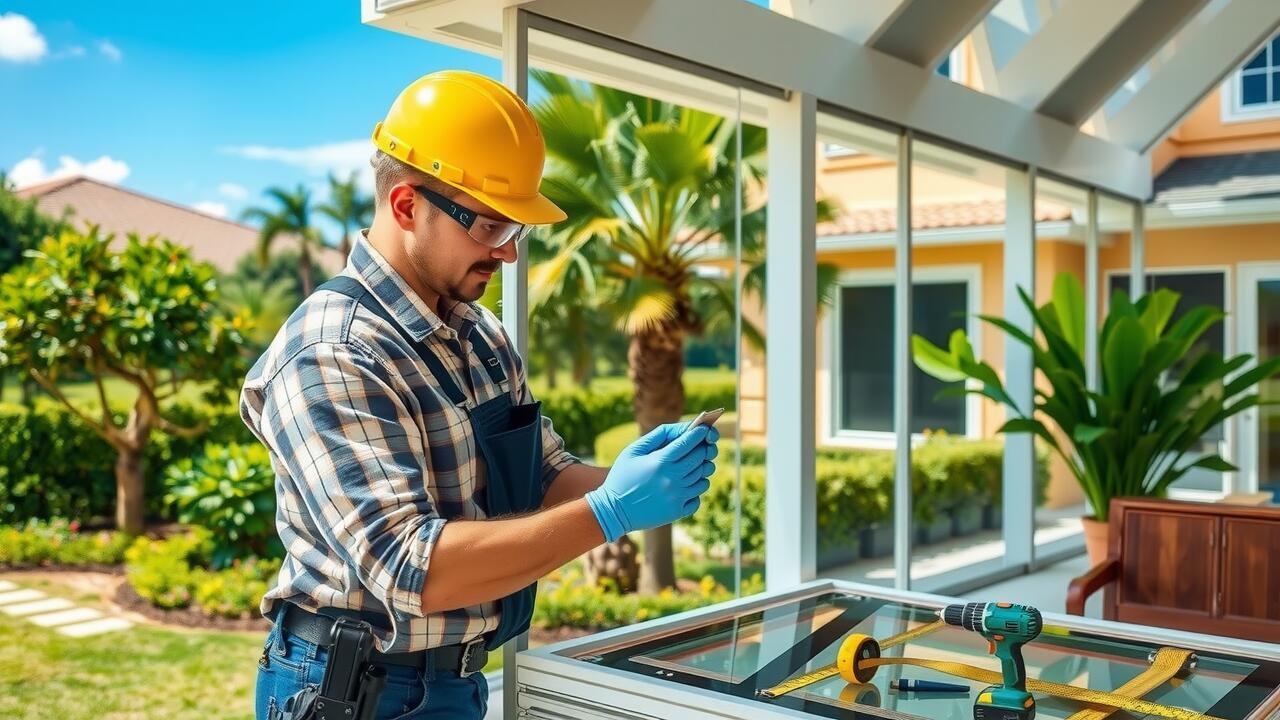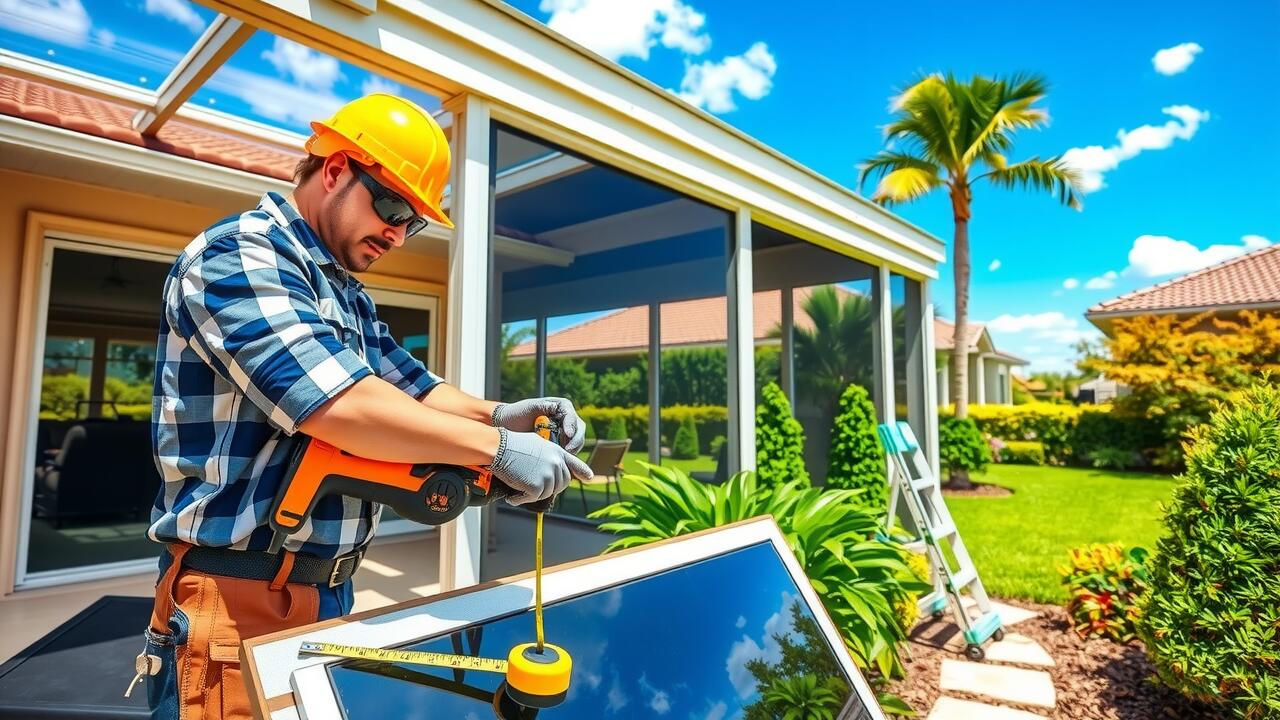
Design Features to Consider
When transforming a lanai into a sunroom, various design features play a crucial role in ensuring functionality and aesthetics. Think about the style and layout that best suit your home’s architecture. Popular choices often include open floor plans with seamless transitions from indoor to outdoor spaces. Lanai enclosures can enhance this aspect, providing an inviting atmosphere while offering protection from the elements. Consider how natural light will enter the space and whether features like skylights or larger windows will be beneficial.
Windows and doors greatly influence both the appearance and practicality of the sunroom. Choose energy-efficient options to maintain comfortable indoor temperatures throughout the year. Additionally, ventilation should not be overlooked. Strategically placed windows can help control airflow, creating a pleasant environment. Incorporating features like retractable screens may provide the flexibility needed to enjoy fresh air without inviting unwanted pests inside your newly redesigned space.
Windows, Doors, and Ventilation
Windows and doors are essential components of any sunroom, impacting both aesthetics and functionality. When considering the conversion of a lanai into a sunroom, the choice of windows can enhance energy efficiency and natural light. Popular options include double or triple-pane glass, which provides better insulation. For those looking to expand their outdoor living experience, sliding or bi-fold doors can create a seamless transition between the indoor and outdoor spaces. Lanai enclosures often feature customizable window styles, allowing homeowners to select designs that fit their personal style and desired level of ventilation.
Ventilation is another critical aspect to address during this transformation. Proper airflow can help maintain a comfortable environment, especially in warmer months. Incorporating operable windows facilitates fresh air circulation, while strategically placed ceiling fans can assist in regulating temperature. Additionally, some homeowners choose to add skylights for extra light and ventilation. Investing in high-quality lanai enclosures with effective ventilation options ensures that the sunroom remains comfortable year-round, enhancing the overall enjoyment of the space.
Additional Amenities and Upgrades
When transforming a lanai into a sunroom, considering additional amenities can elevate both comfort and functionality. Features like built-in seating, shelving, or custom cabinetry can enhance the aesthetic appeal while optimizing space. Lanai enclosures often provide additional security and insulation, making the sunroom usable year-round. Incorporating amenities such as retractable screens or sliding glass doors can promote airflow and allow for flexible usage depending on the weather.
Investing in upgrades such as integrated lighting, ceiling fans, or even a small wet bar can enhance the everyday experience. Choosing energy-efficient windows and doors is essential for comfort and can significantly affect heating and cooling costs. Thoughtful upgrades not only increase the value of the property but also transform the space into a cozy retreat. A well-designed sunroom with these features ensures a beautiful and functional area for relaxation and entertainment.
Heating, Cooling, and Lighting Options
When planning to convert a lanai into a sunroom, selecting appropriate heating, cooling, and lighting options is essential for comfort and functionality. Many homeowners opt for electric baseboard heaters or ductless mini-split systems for climate control. These systems can efficiently keep the space warm during cooler months while allowing for zoning flexibility. Additionally, incorporating ceiling fans can enhance airflow, making the sunroom a more pleasant area during hot summer days. Lanai enclosures can also benefit from insulated glass which improves energy efficiency and temperature regulation.
Lighting plays a crucial role in enhancing the ambiance and usability of the sunroom. Natural light is a primary advantage of converting a lanai, but supplementing it with artificial lighting is necessary for evening use. Recessed lighting or pendant fixtures can create a warm inviting atmosphere. It’s also common to use adjustable dimmers, allowing homeowners to customize the brightness based on the occasion. Integrating smart lighting solutions can provide convenience, making it easier to control the brightness and mood of the space.
Cost Breakdown by Project Phase
When transforming a lanai into a sunroom, the project typically unfolds in several phases, each with its own cost implications. The planning phase often includes architectural design and obtaining necessary permits. Homeowners might spend anywhere from a few hundred to several thousand dollars on these initial steps. Additionally, decisions around lanai enclosures may increase costs depending on the materials chosen, such as glass, screens, or insulated panels.
During the construction phase, expenses tend to rise significantly. This phase includes labor, building materials, and installations. Depending on the complexity of the design and the quality of materials, construction costs can vary widely, ranging from a few thousand to tens of thousands of dollars. Finishing touches, such as flooring and interior design, should also be factored in, as these enhancements can significantly impact the overall budget. Properly allocating funds for each stage ensures a smoother transition from lanai to sunroom.
Planning, Construction, and Finishing
Planning a lanai conversion into a sunroom begins with careful consideration of your goals and local building regulations. You’ll need to decide on the overall design and layout to optimize both aesthetics and functionality. Engaging a professional designer can help you navigate these decisions while adhering to any zoning laws. Planning must include obtaining the necessary permits to ensure compliance, which can vary significantly by location.
During the construction phase, the installation of lanai enclosures is a crucial element to consider. Properly installed enclosures provide insulation and protection from the elements. The finishing touches will also play a major role in the project’s success. Selecting suitable flooring, lighting, and decorative features helps to create a cohesive space that enhances comfort and style. Investing time in these details will add value to your sunroom and contribute to a more enjoyable living environment.
FAQS
What is the average cost to turn a lanai into a sunroom?
The average cost can range from $15,000 to $50,000, depending on various factors such as size, materials, and design features.
What factors influence the cost of converting a lanai to a sunroom?
Key factors include the size of the sunroom, the type of windows and doors, additional amenities, and the level of construction and finishing required.
Are there any permits required for converting a lanai into a sunroom?
Yes, many local jurisdictions require permits for structural changes, so it’s important to check with your local building department before starting the project.
How long does the conversion process typically take?
The timeline can vary based on the scope of the project, but most conversions take between 4 to 12 weeks to complete.
Can I finance the conversion of my lanai into a sunroom?
Yes, many homeowners choose to finance their sunroom projects through home improvement loans, personal loans, or home equity lines of credit.
